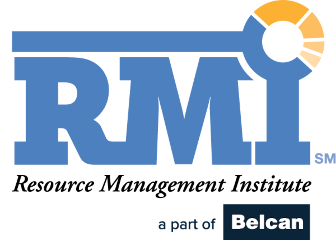The professional services industry is constantly evolving, and recent research shows that leadership and the teams they manage aren’t always on the same page about how those changes are manifesting in the field. The widening gap between leadership perception and the actual experiences of team members, particularly regarding workload pressures and client service delivery, poses significant challenges not just to organizational cohesion and effectiveness but also to employee satisfaction and retention.
In this article, we’ll examine the root causes and potential solutions to bridging this gap and fostering a more synchronized and successful organization.
Understanding the Chasm
Recent insights from a Kantata-commissioned report by S&P Global Market Intelligence, “The Macro Technology Shift Impacting the Professional Services Industry,” shed light on the substantial gap between what leaders believe is happening within their organizations and the realities faced by their teams.
According to S&P Global ’s research, “only 42% of survey respondents believe their organization’s leadership really understands the strain that delivery teams are under. And only 47% of PS respondents strongly believe their tools provide the data that leadership, delivery, and finance teams need to make good decisions about how the organization can improve.”
This means that the majority of today’s professional services team members that are not in leadership positions doubt that the heads of their organizations truly know the on-the-ground realities of their day-to-day work. Obviously, this disconnect can be hugely detrimental to the long-term success of any business, breeding mistrust and undermining the collective efforts to reach organizational objectives
What is causing this misalignment and how can it be resolved? Finding a path to solutions can be a major catalyst for positive change in any professional services firm.
Why Don’t PS Leaders Understand Resource Strain?
Several factors contribute to the gap between leadership understanding and team realities. The professional services sector has undergone a dramatic upheaval since 2020, characterized by volatility and rapid change. The pace of change has made it hard for leaders to stay on top of the macro and micro trends driving employee well-being.
The modern professional services work environment, increasingly distributed and reliant on virtual collaboration, compounds these challenges. The increase in remote work (both away from offices and away from onsite service delivery) has made it harder to gauge the sentiment of team members. Without the right tools to capture and analyze ebbs and flows in sentiment and performance across projects accurately, leadership’s awareness of team struggles dwindles, making effective intervention and support more difficult.
This is why technology providers like Kantata are developing tools like Kantata Pulse that capture the sentiment of project team members and clients at regular intervals during service delivery, surfacing project sentiment data alongside project financials to provide a more complete picture of project and portfolio health than has previously been possible. The goal is to ensure that projects that may seem healthy on the surface – that are on time and on budget – but that are actually burning out team members and burning relationships are more visible, giving decision-makers from the Resource Management Office to the back office to the executive suite the insights needed to take corrective action sooner.
Bridging the Gap: How Leadership Can Better Understand Their Teams
If leaders are going to bridge this gap, simply wanting to know more won’t cut it – it will be critical to lead a focused effort to gain real, measurable insights. Consider the following action items:
- A Regular Cadence of Anonymous Surveys: By conducting routine anonymous surveys, organizations can tap into honest feedback regarding workload and work conditions – team members who wouldn’t normally tell upper management about their issues will have an avenue to give honest feedback on their workload and role. Such surveys should be structured to encourage open communication (with emphasis on anonymity) and repeated over time to monitor shifts in team sentiment.
- One-on-One and Small Team Meetings: It’s not surprising that most employees would be uncomfortable expressing their opinions, especially critical ones, in large, company-wide settings. However, one-on-ones and small team meetings that are designed for attendees to discuss workloads and work conditions with managers can help encourage honest feedback in the workplace without fear of repercussions.
- Reliable Resource Performance Data: Having your teams complete their tasks within a dedicated professional services software solution generates detailed insights regarding how successful both individuals and teams as a whole are in hitting their goals for projects. This performance data equips managers with the hard evidence needed to make informed decisions about workload distribution and team support..
- Realistic Utilization Targets: Balancing project assignments to leverage team members’ skills fully while avoiding overburdening them is key. Measuring teams against unattainable targets doesn’t benefit your business or your employees. Data-driven insights are needed to guide PS leaders as they work to set realistic targets and upskilling paths for their teams.
Implementing these measures delivers a blend of data-driven and direct insights into employee sentiment to leadership. Understanding the nuanced pressures faced by team members and adapting organizational strategies accordingly can significantly improve alignment, trust, and efficiency.







